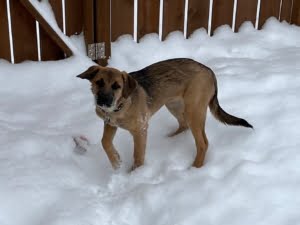We’ve discussed search engine optimization (SEO) before, but maybe you want links to our sources. We’ve curated the following information and links to help make your website for people to find in search results. This includes making the site easier for search engines to understand so that they can properly direct people to the information they’re looking for.
Be Easy to Find: How Search Works
When a person types a query, Google seeks the most relevant answer from its index based on many factors. The system tries to determine the highest quality answers, and factor in other considerations that will provide the best user experience and most appropriate answer, by considering things such as the person’s location, language, and whether a person is on a desktop or mobile device.
Crawling and Indexing
Google is constantly using crawlers to search the internet for new pages, but it’s also possible to speed the process by submitting a list of pages (a sitemap) for Google to find.
After a page is discovered, Google tries to understand what the page is about through a process called indexing. Google analyzes the content of the page, catalogues images and video files embedded on the page, and otherwise tries to understand the page.
Optimize Your Site
The goal of a search engine is to connect people with solutions to the problems they are trying to solve; this should be your goal too. Don’t build your site to appease algorithms, build it to provide people with content that will help solve their problems.
Site Structure and Updates
Create short, meaningful and unique page URLs, titles and headings that convey the subject of the page. Include unique description meta tags that can be used when a search engine is unable to find more relevant content to display as a search result. Remember to use text rather than relying on images, or images with text embedded in them, to convey content.
Your site should be well organised and easy to navigate, with pages that are separated by topic. Keep your website up to date and refresh your content to increase its relevance to people whenever possible.
To improve your serving and ranking:
- Make your page fast to load, and mobile-friendly.
- Follow the Google Webmaster Guidelines, which help ensure a good user experience.
- Read the Web Fundamentals page to learn about best practices and techniques to improve website performance.
Promotion
Promoting your site through paid services like Google Ads or organic methods like social media will help generate traffic and referrals to your website. When launching a new site, product or service, a small advertising budget can go a long way in helping people find you.
Be Worth Finding: Create Content that Counts
SEO Starter Guide
Creating compelling and useful content will likely influence your website more than anything else. People know good content when they see it and will likely want to direct others to it if they find it useful.
Ensure your content is well written and easy to follow. Be sure to address the main topic of a page as soon as possible, ideally in the first paragraph. It’s always beneficial to organize your content so that visitors have a good sense of where one content topic begins and another ends as many people will only skim content that doesn’t appear immediately relevant to them. Breaking your content up into logical chunks or divisions helps people find the content they want faster.
When possible, creating new content on a regular basis will not only keep your existing visitor base coming back, but also bring in new visitors. When trying to attract new visitors, think about the words that a person might search for to find a piece of your content. People who know a lot about the topic might use different keywords in their search queries than someone who is new to the topic. Even if you’re not looking to add a full blog to the website, you may want to consider these points when writing any content for the website.
Images and Video
Want your website to be found in Google Image or Google Video results? Make sure the image or video is relevant to content on the page and placed as close to the relevant content as possible. Avoid embedding text in images, where it can’t be read by those using screen-readers or crawlers trying to understand the page. Ensure that any alt text, captions, titles, file names and URLs are relevant and logically structured.

- Bad (missing image alt text): <img src=”puppy.jpg”>
- Bad (keyword stuffing): <img src=”puppy.jpg” alt=”puppy dog baby dog pup pups puppies doggies pups litter puppies dog retriever labrador wolfhound setter pointer puppy jack russell terrier puppies dog food cheap dog food puppy food”>
- Better: <img src=”puppy.jpg” alt=”puppy”>
- Best: <img src=”puppy.jpg” alt=”Danielle’s German Shepherd puppy in the snow”>
Videos are identified in the page by the presence of an HTML tag, for example: <video>, <embed>, or <object>. You can help us find your videos by posting a video sitemap. Make sure to provide a high-quality thumbnail image for the video.
You can improve the quality of the title and snippet displayed for your pages by following Google’s title and snippet guidelines. You can test your content by auditing for accessibility and using a slow network connection emulator.



